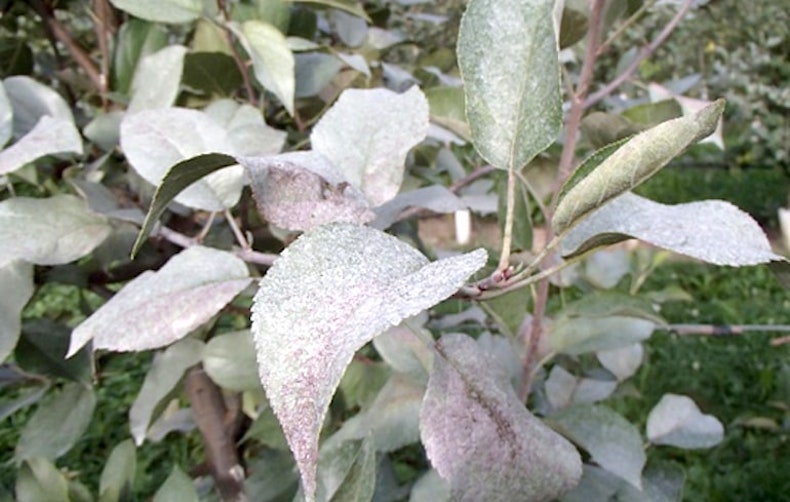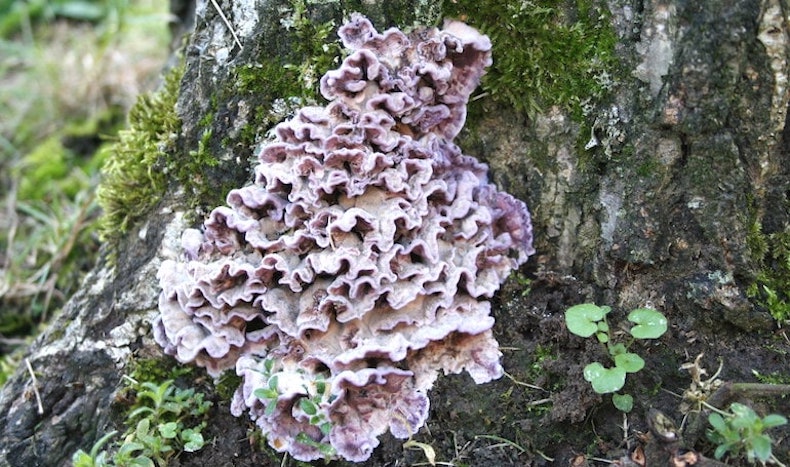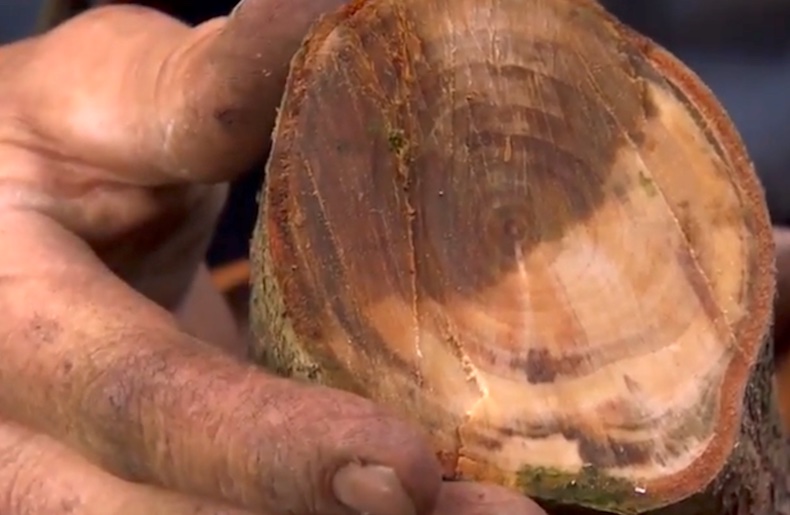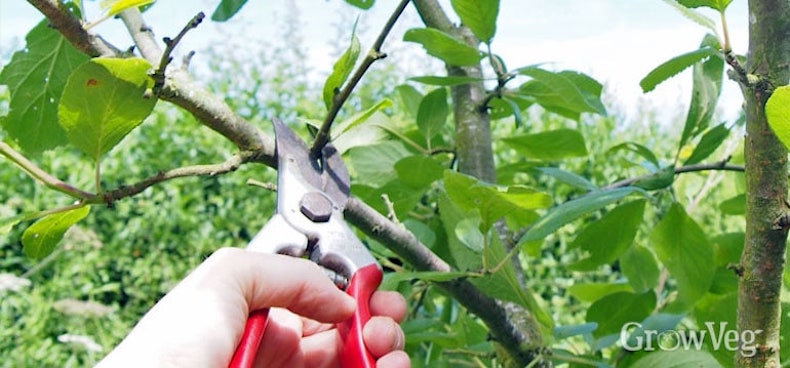Garden diseases - Silver leaf fungus

Keep your eye out for silver leaf fungus
Image: Janet Van Zoeren
Silver leaf is a fungus that is spread via airborne spores and enters through pruning wounds. In most cases it causes leaves to turn silver and the affected branches to die. However not all plants suffer from silvering foliage. In some cases the disease is only detected when branches start to die back.
What is silver leaf fungus?

Fruiting bodies of the fungus is another indication of 'silver leaf' infestation
User:Strobilomyces, CC BY-SA 3.0, via Wikimedia Commons
Plums (particularly Victoria), cherries, apples and apricots are highly susceptible to silver leaf fungus, which enters the plant through pruning wounds or abrasions. The first sign of infection is during the summer when leaf silvering occurs. By late summer, mauve-coloured fruiting bodies (the spore-producing organs of a fungus) will have formed.
Neighbouring plants like laburnum and rhododendron can also be affected, although their leaves don’t turn silver.
How do I recognise silver leaf fungus?

Dark staining on dead branches confirms silver leaf diagnosis
Image: Gardeners World
Silver leaf causes the foliage on your plant to turn a silvery hue before browning and dying off. New shoots start to die back, followed by entire branches. Even if your plant does not have silvering foliage, but branches die back without obvious cause, you should suspect silver leaf.
To confirm the diagnosis, cut off a dead branch and moisten the end. If a dark brown or purple stain appears in the wood, your plant is suffering from silver leaf. False silver leaf symptoms are sometimes caused by cold, wind or lack of water. While the leaves might turn silver, the inside of the wood won’t be stained.
How to treat silver leaf fungus
If you identify silver leaf, cut back any affected growth to around 15cm (6") beyond the infected wood. Burn the prunings as soon as possible as fruiting bodies will still appear on branches that are left lying around. If possible, cut the branches back on a dry day during the summer.
Feed and water the tree to promote its recovery and, when autumn arrives, provide a mulch of well rotted manure or garden compost. Take care to not mound any mulch around the base of the stem. If you notice any fruiting bodies on the main stem over the autumn it would be best to remove the tree entirely.
How to prevent silver leaf fungus

Prune your fruit trees in the summers
Image: GrowVeg.com
The infectious spores of silver leaf are particularly prevalent during mild, wet winters. This is why plums and cherries should always be pruned in the summer during dry weather, when the wounds will heal much quicker. When pruning always use tools that have been cleaned and sterilised before and after use.
Other pages you might like
See all pests & diseases guides
Individual guides
Diseases
- Apple scab
- Bacterial canker
- Blackleg
- Blossom wilt
- Botrytis
- Brown rot
- Clematis wilt
- Downy mildew
- Fungal disease
- Honey fungus
- Leaf scorch
- Leaf spot
- Leek rust
- Lily disease
- Peach leaf curl
- Pear rust
- Phytophthora root rot
- Potato & tomato blight
- Powdery mildew
- Tomato greenback
- Tomato leaf curl
- Tomato stem canker
Sign Up For Exclusive Special Offers




© 2024 Thompson & Morgan. All rights reserved. A division of Branded Garden Products Limited.
Sign up for exclusive offers!



